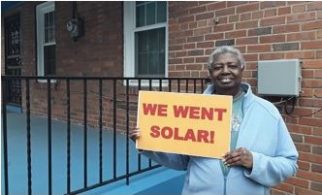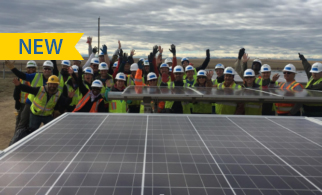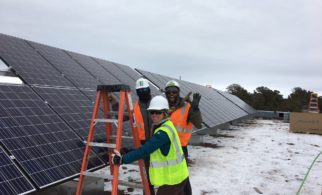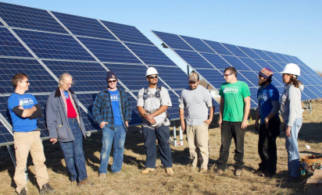Federal and State Tax Credits
Guiding principles: Accessibility and Affordability, Consumer Protection
Barriers addressed: Cost
Tax credits are a common form of incentive program, although one that is limited in its utility to low-income households. The primary federal solar policy is the solar investment tax credit (“ITC”), which provides a tax credit for solar systems on residential (under Section 25D) and commercial (under Section 48) properties. Originally set at 30 percent with a five-year step-down and a scheduled expiration at the end of 2016, the ITC has been extended several times, most recently in December 2020. The current ITC step-down schedule is as follows:
- 2021-2022: 26%
- 2023: 22%
- 2024+: 10% (non-residential and third-party owned residential), or 0% (host-owned residential)
Tax credits are also available at the state level; the Database of State Incentives for Renewables & Efficiency (DSIRE) has a comprehensive list of solar incentives by state, as well as more information and maps showing solar policies across the United States. It’s also worth noting the tax credit applies to solar + storage – check out CESA’s great resource, Solar+Storage for Low- and Moderate-Income Communities: A Guide for States and Municipalities.
Unfortunately, low-income families are typically unable to leverage tax credits directly because they are not in a qualifying tax bracket or otherwise do not have the tax burden needed to make the credit valuable. Making tax-based incentives work for low-income consumers, as well as nonprofits, Tribes, and other non-taxable entities, requires availability of a refund or direct pay option or a third-party financing entity that can monetize the credit. Strong low-income solar programs should allow alternative ownership/purchasing models so that developers serving low-income families are able to leverage the non-refundable ITC for solar development. Alternative ownership/purchasing models may include leasing or power purchase agreements (PPA) to enable solar customers to install solar with little or no upfront costs.
In 2015, the California Public Utilities Commission approved, among other reforms, a decision to revise the state’s Single-Family Affordable Solar Homes (SASH) Program to allow for third-party project ownership. This has paved the way for the nonprofit program administrator to partner with solar financing firms under a prepaid power purchase agreement model to deliver the benefits of the ITC as well as long-term maintenance coverage to its low-income customers. Since then, third-party ownership and PPAs have been used to leverage the ITC for low-income solar in other states and the District of Columbia.






